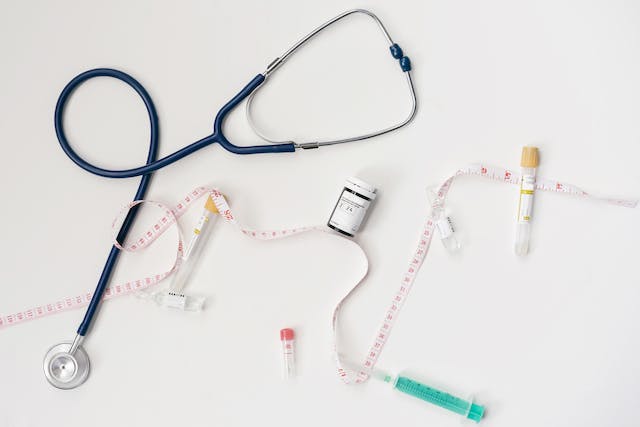What is a Field Safety Corrective Action?
Any action performed to reduce the risk of death or serious deterioration in health connected with the use of a medical device is referred to as Field Safety Corrective Action (FSCA). The manufacturer is required to take action to remove or limit the risk of the recognised dangers.
If a medical device malfunctions in Switzerland, the manufacturer is required to undertake an FSCA and Swissmedic keeps track of all FSCAs regarding medical equipment sold in Switzerland.
Reporting a Field Safety Corrective Action (FSCA)
- Field safety corrective actions involving items placed on the Swiss market must be reported to Swissmedic by manufacturers
- The Swiss authorised representative is responsible for reporting for manufacturers who are not headquartered in Switzerland
- When a field safety corrective action is recorded, Swissmedic determines whether the risk can be effectively mitigated by the manufacturer’s steps and supervises their execution
- The content is the responsibility of the manufacturer or an authorised representative (accuracy, completeness, and data protection)
- Importers must immediately notify the manufacturer and its Swiss authorised agent of any complaints or reports of suspected incidents involving a device they have placed on the market
- Distributors who receive complaints or reports about a device they sold must immediately notify the manufacturer, as well as the manufacturer’s Swiss authorised agent and the importer, if relevant
- Healthcare professionals also must report serious occurrences to the supplier and Swissmedic
- Such reports should be sent as soon as possible to the supplier organization with the help of the form available on the Swissmedic website.
5 Tips of Reporting procedure
- The Initial Report (initial MIR)
- An Interim Report (follow-up MIR)
- The Final Report (final MIR)
- A combined Initial-Final Report (combined initial-final MIR)
- Evaluation by Swissmedic
Electronic submission
FSCAs must be reported with the help of the form released by Swissmedic. The Swissmedic website has this form available for download. This form must be used to send all FSCA reports to Swissmedic in an electronic, machine-readable manner.
Reports can be submitted in English or one of the official Swiss languages. All required fields must be filled out. The completed report form, the field safety notice (FSN), the customer list, and any other supporting paperwork should be emailed to [email protected].
If Swissmedic has any additional questions about an FSCA, it will contact you by email.
Timeline for reporting
- If the serious incident clearly poses or has the potential to pose, a serious and imminent threat to the lives or health of a large number of people (serious public health threat), the report must be submitted as soon as possible, and no later than 2 calendar days after becoming aware of the incident
- If the significant incident resulted in death or an unexpected serious worsening in a person’s health, the report must be submitted immediately, and at the latest within 10 calendar days
- All other major incidents must be reported as soon as possible and no later than 15 calendar days after the date of discovery
- An Initial Report must be made to Swissmedic if the manufacturer or Swiss authorised representative has not received sufficient information within the statutory time limit to determine whether or not a reportable occurrence has occurred
Types of Reports
1. Reporting of Trends
If a manufacturer sees a statistically significant increase in the frequency or severity of non-serious occurrences or expected negative side effects, they must notify SwissMedic by sending the Trends report form to mailto:[email protected].
The Swiss authorised representative is in charge of this role for producers who are not headquartered in Switzerland. The manufacturer or the Swiss approved representative might submit the report in this scenario.
2. Periodic Summary Report (PSR)
Serious incidents where the root cause is known (and/or) the serious incident is already the subject of an FSCA (and/or) the serious incidents occur frequently and are well documented then these incidents can be grouped and reported together to SwissMedic in the form of Periodic summary Report.
This process can be initiated by sending SwissMedic an email of this Periodic summary report form in English or any of the Swiss national languages.
3. Periodic Safety Update Report (PSUR)
Manufacturers of class IIa, IIb, and III medical devices must develop and submit a Periodic Safety Update Report (PSUR) for each product and, if relevant, for each product category or group, to the responsible notified body.
The PSUR and the Notified Body’s evaluation outcome must be submitted to Swissmedic upon request by the manufacturer or its Swiss authorised agent.
FAQ:
What is Field Safety Notice?
Every manufacturer is required to inform its users and, if applicable, patients about field safety remedial actions that have been implemented. Typically, this involves sending a Field Safety Notice (FSN).
The European Commission website has FSN templates as well as a confirmation form. The templates are designed to help manufacturers create high-quality customer letters that include all relevant information.
In the event of publishing, the FSN must not contain any information that would be in violation of data protection laws. Before publication, particularly sensitive personal data should be removed or, if absolutely necessary, anonymized.
Do Hospitals have to maintain a medical device vigilance system?
Yes, Hospitals are legally required to establish a reporting system. They must designate someone to be responsible for serious occurrences involving medical devices and they must publicly notify Swissmedic of this vigilant contact person for medical devices.
If there are any new vigilance contact persons for medical devices, or if the contact details of existing registered contact persons change, Swissmedic must be notified. Swissmedic inspects the reporting systems in hospitals.











